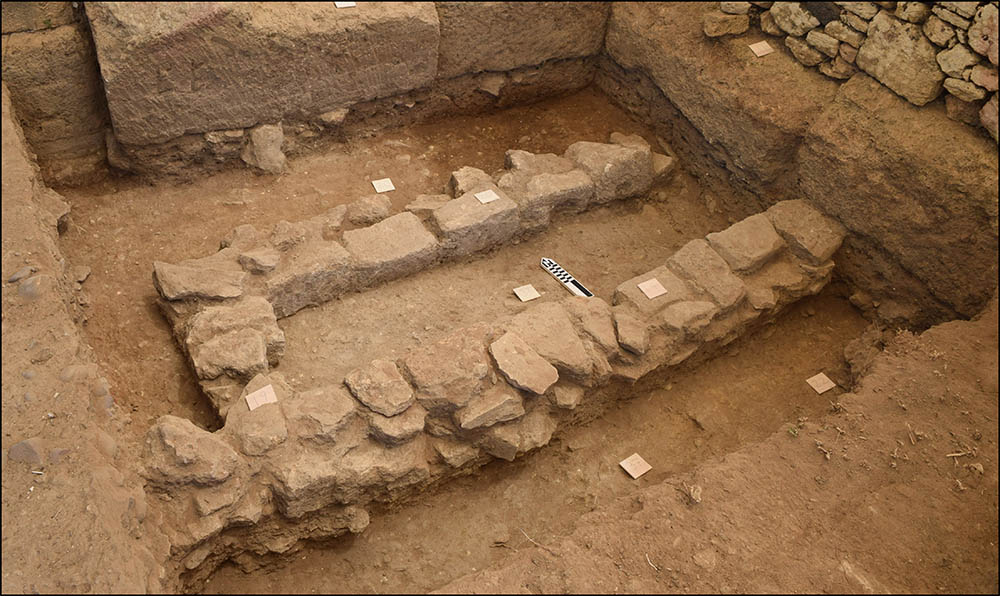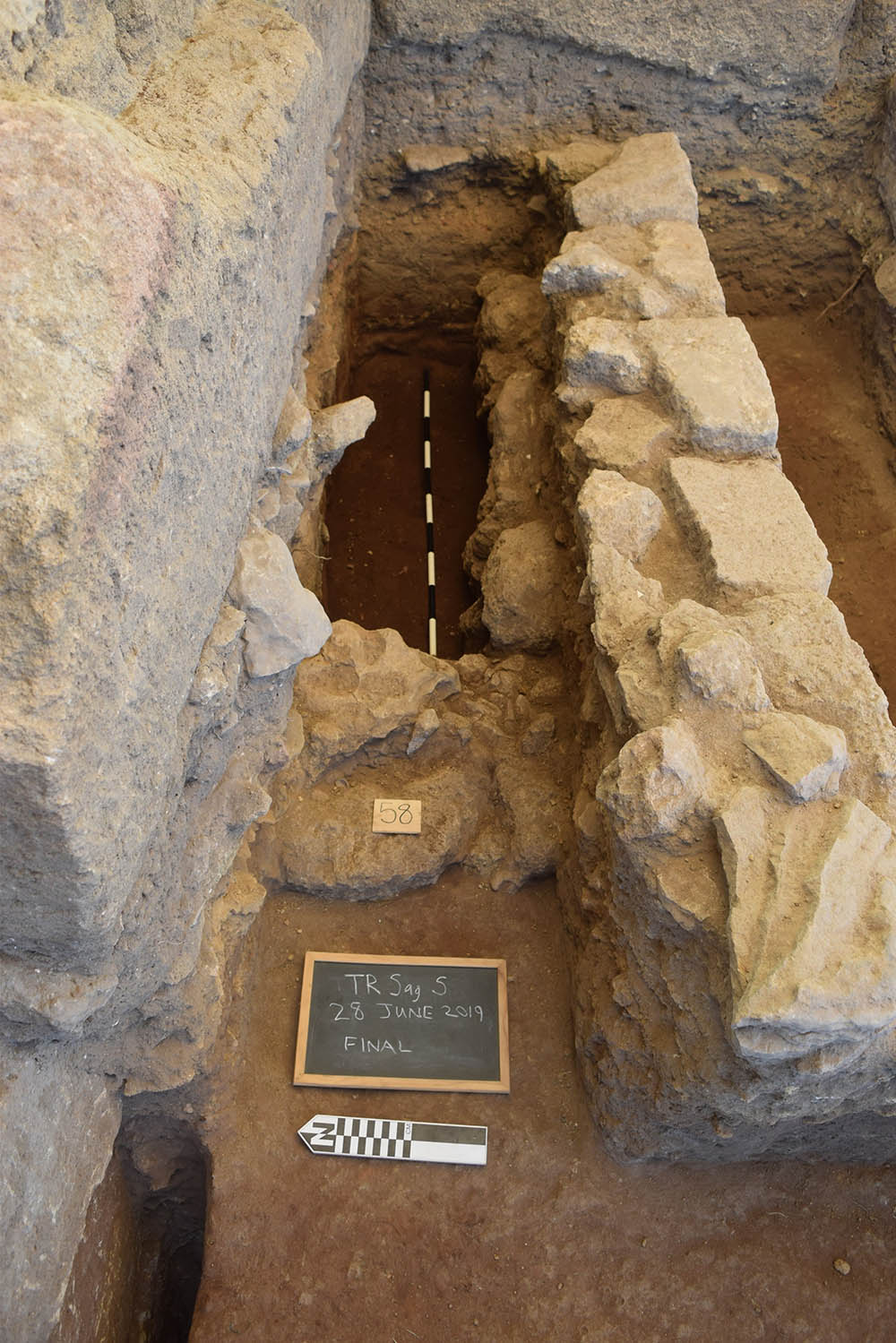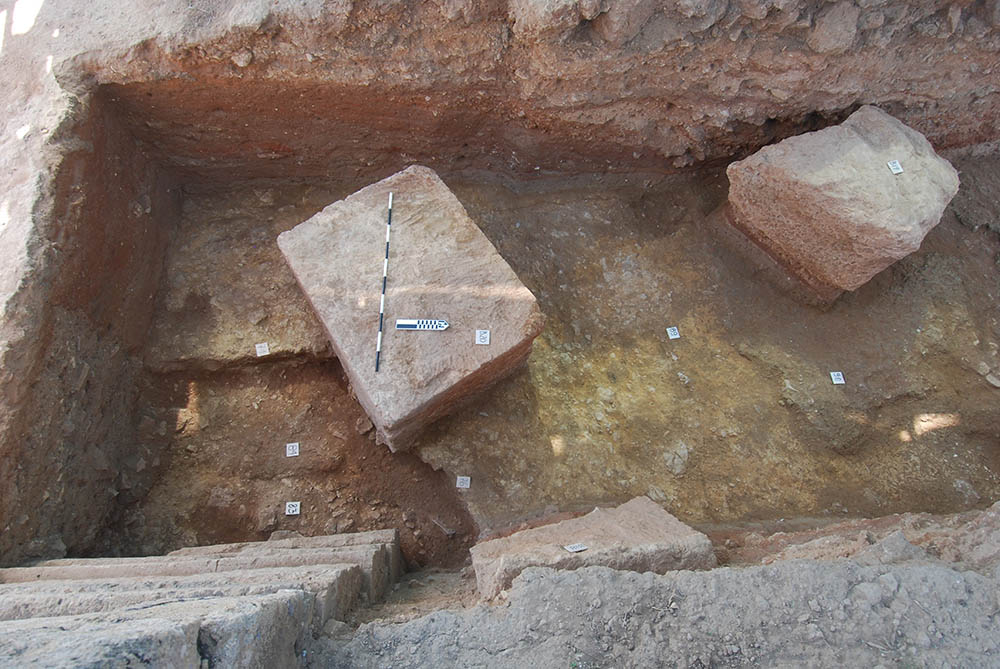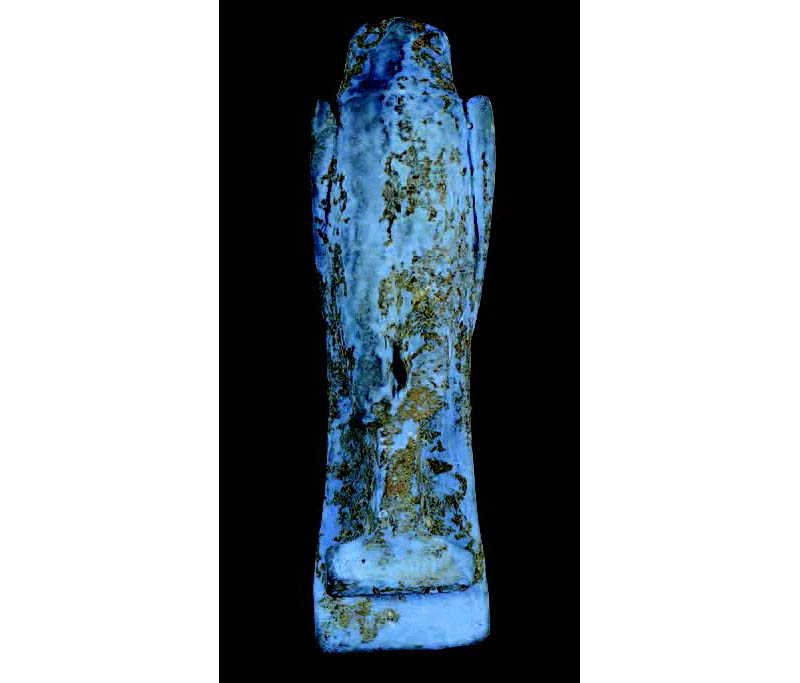 | In the Field
| In the Field

IFA Excavations at Selinunte
Summary of Excavation Results, 2019
The twelfth campaign on the acropolis of Selinunte took place between June 7th and July 5th of 2019. This campaign was led by the Institute of Fine Arts, NYU and the Università degli Studi di Milano, in collaboration with the Archeological Park of Selinunte. The mission this year continued the trend towards an increasingly interdisciplinary and international team, with more than fifty advanced students and experts from eight different countries.
This year’s fieldwork [Figure 1] saw the continuation of work in two trenches opened last year. Along the southern side of Temple R, Trench S had revealed a new feature to the southeast of Temple R, while also demonstrating that there was intact ancient stratigraphy to the immediate south of the Temple, despite the depth of modern excavation in that area. and between the western side of Temple R and the southern side of Temple C (Trench R). The excavation has produced important results concerning the earliest phase of Greek occupation of the main urban sanctuary, and the activities associated with the construction of Temple R and Temple C.

Figure 1. Selinunte, area of Temple R with indication of the trenches excavated in the summer 2019. Drawing by Filippo Pisciotta, David Scahill and Massimo Limoncelli. © Institute of Fine Arts, NYU.
Excavation of Trench S initially focused on excavating the entire area of the trench down to the level of the rectangular structure provisionally identified as a hollow altar during last season’s excavation [Figure 2]. Happily, the stratigraphic situation outside of Temple R continues to roughly conform to that found inside, with evidence of fifth century renovations giving way to a surface level associated with the original use of Temple R in the sixth century, and even the construction levels beneath.

Figure 2. Selinunte, Hollow altar found in Trench S, at the beginning of the 2019 season. Photo by Andrew Ward. © Institute of Fine Arts, NYU.
Within Trench S, this year revealed a particularly significant discovery in connection to the sanctuary’s earliest phases of use by Greek colonists. Near the southeastern corner of Temple R, we discovered the antler of a red deer in an excellent state of preservation [Figure 3]. The antler is best seen as the votive deposition of a hunter to Artemis, a goddess for which, together with Demeter, there are several other indications of cult activity in this part of the sanctuary. The antler was found in a purpose-made pit, and the suspension holes found drilled in the antler suggest that it would have been displayed elsewhere prior to its deposition in the pit. At the same level of the antler pit, one finds a large circular pit filled with charcoal, and a third pit that was empty save for its clayey fill.

Figure 3. Selinunte, Saggio S, antler of red deer during excavation. © Institute of Fine Arts, NYU.
These three pits seem to be associated with the western end of a rectilinear structure with foundations made of chips of stone and mudbrick elevation [Figure 4]. The southern and eastern side of this structure had been first identified in 2010. Thanks to the new discovery this year, it is possible to reconstruct the building with a length of 4.5 m. The structure was positioned immediately to the east of the later Temple R and had the same east-west orientation. Datable to the late seventh century BCE, the structure was razed on the occasion of the construction of Temple R in the first quarter of the sixth century BCE. Based on its placement and the associated materials, this building, one of the earliest Greek structures documented at the site, likely had a sacred function. A second early building of similar form was excavated in recent years to the west, in correspondence with the adyton of Temple R.

Figure 4. Selinunte, Trench S, line of stones of a predecessor structure, immediately beneath the remains of the “hollow” altar. Photo by Andrew Ward. © Institute of Fine Arts, NYU.
Concerning the construction and use of Temple R, two important discoveries were made in Trench S: two additional post holes used in the lifting of the blocks of the cella of the temple; as well as the attestation of construction rituals outside of the temple as well, suggested by the discovery of iron weapons and two bull horns, likely belonging to the same animal [Figure 5]. The coinage of Selinus in the Classical period, and remains of terracotta and marble statues of bulls from the main urban sanctuary, recall the importance of the sacrifice of such costly victims at Selinus. Our discovery represents the first archaeological evidence of this type of sacrifice on the acropolis.

Figure 5. Selinunte, Trench S, bull’s horns during excavation. Photo by Andrew Ward. © Institute of Fine Arts, NYU.
Continued excavation in Trench R has fully revealed the foundation trench of Temple C [Figure 6], showing how the sloping of this sector of the acropolis was artificially created on the occasion of the erection of this monumental building. The layers associated with the construction of Temple C are perfectly preserved and they offer valuable information concerning the building process, including the laying ramps, the use of post-holes for lifting devices, and differential dressing of blocks depending on their placement in the foundation courses.

Figure 6. Selinunte, Trench R, view of Temple C’s foundations following the emptying of its foundation trench. Photo by Daniele Bursich. © Institute of Fine Arts, NYU.
Also notable, has been the discovery of an exceptional votive deposit found against the western front of Temple R, and marking the limits of the construction site of Temple [Figure 7]. This exceptional deposit included gold, silver, ivory, a faience statuette of a falcon [Figure 8], and fine pottery. Given its position, it may be interpreted as a kind of propitiation of the goddess of Temple R by the builders of the much larger Temple C, most likely dedicated to Apollo.

Figure 7. Selinunte, Trench R, viTrench R including large blocks that makeup the foundation of Temple C.ew of pit cut along the foundations of Temple R during the construction of Temple C. Photo by Daniele Bursich. © Institute of Fine Arts, NYU.

Figure 8. Selinunte, Trench R, faience statuette of a falcon. Photo by Raffaele Franco. © Institute of Fine Arts, NYU.
Clemente Marconi (director) and Rosalia Pumo (co-director), and Andrew Farinholt Ward (field director)